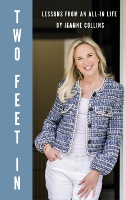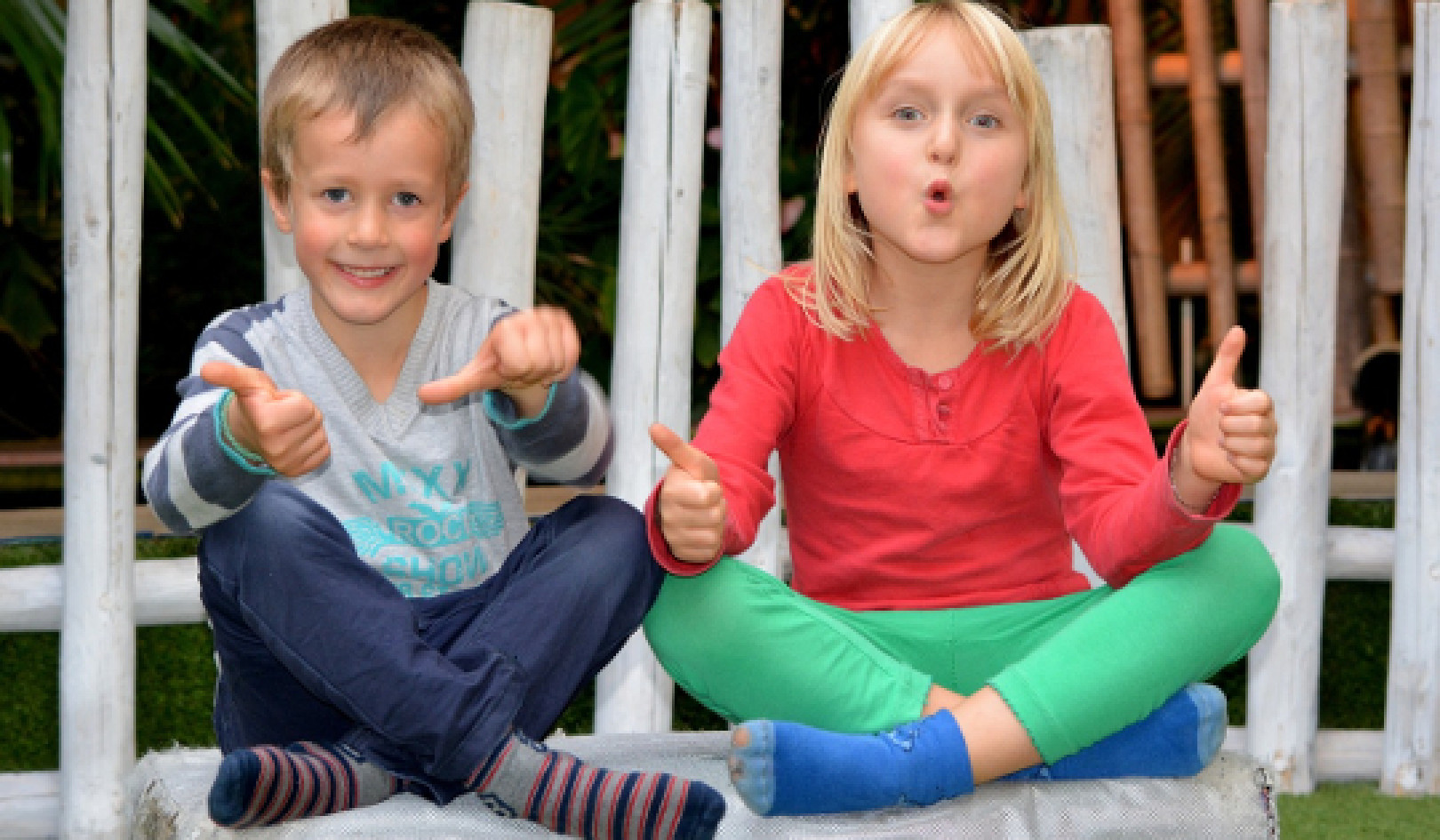
Image by Jean van der Meulen
I want to help people find wellness, calm, and peace within their environments. I realized that was my special gift. As an interior designer, I focused my process on first understanding how people felt in their homes, and how they wanted to function there going forward. Sometimes that meant helping my clients embrace change.
It should not be surprising that the process of changing a home in a big way can be stressful. Our environments and mindsets are intimately linked. Sometimes we do not want to leave our comfort zones, even if everything in our heart is telling us that we must if we want to transform our lives.
As my design projects grew in size and scope, I learned how to feel out a client’s sense of these things. Were they unconscious to the effect environments had, or were they actively striving to change something in their lives?
Once I determined their state of mind, I was able to attune myself and help them stretch outside their comfort zones. I introduced ideas gently but with passion and belief in the way I spoke.
A New Perspective
Through my interactions with my clients, I got them to walk through their homes with a new perspective. I wanted them to see how their rooms currently made them feel, to calibrate their sense of color and taste for texture.
Increasingly, my job was a profile in emotional psychology and self-improvement, just as much as it was about choosing beautiful aesthetics for a home. It’s funny to think about, since finding emotional connection myself was such a struggle over the years. Yet without my struggle, I would not have the process I have today.
I want to break that down for you here. I create my profiles using specific questions and areas of thought for my clients. From there, I can weave together the best design plan for their needs—and their dreams.
The Big Question
An essential question I utilize as a barometer for client’s mindsets: how do you start your day?
What is the first thing your feet feel when you get out of bed in the morning? The first thing you see, or hear, or smell?
That first sensory experience sets the tone for the rest of the day. Just like starting the day off with moments of gratitude or mindfulness helps prepare our mindset, the energy from our environments immediately affects us too.
Is the floor cold and startling, or is there a soft, cushioned rug under your feet? Does the bathroom floor chill you to the bone, or are the floors heated? If you’re renovating your bathroom, take this advice—always go for heated! It’s an expense no one regrets.
If there aren’t dimmers on your bedroom or living room lights, install them and see how it changes everything. The brightness of artificial light can make us feel like robots first thing in the morning or late at night. Instead, a softer, pinker shade of light is far more comforting—and flattering!
Would you rather see a favorite painting or a pile of laundry when you open your eyes in the morning? Which one of those inspires you more?
While having discussions about laundry bins with clients might seem strange, I have come to accept that all of this is part of my job. I may not be a physical trainer, but I can help people change their lives in meaningful ways. Intention, intuition, design. All of these elements can complement lives or cause disharmony if left unattended.
Downtime or “Me” Time
I always ask my clients where they go within their homes for “me” time. Where do they go to make themselves a priority in their day? It could be their home gym, like the one I made for myself at my house. Or a meditation room or a reading nook.
A basement does not have to remain a dreary afterthought. With an eye for layout and space, I can help build a home gym with everything a person could need to make fitness a priority in their daily life. An unused or spare bedroom can easily be converted to a Zen oasis for meditation, while a reading nook can be carved from the excess space of a walk-in closet or awkward corner.
Everyone should have a quiet space to go read within their home, away from the activity of the family or their work-from-home job. It is one of the most common design choices I utilize in my work. I try to suggest a reading space in every bedroom, and work to place reading benches in hallways, dead spaces, or rooms that too often become storage like offices or sunrooms.
I call it the “Do Not Disturb” special: this is a critical environment for anyone because it makes your home a place for rest. No real home can be complete without such a safe haven within it.
Food & Meal Time
When I stopped thinking about cooking and meal time as a burden, and instead framed it as an opportunity, my life became much richer. There’s nothing like a useful and beautiful kitchen. I’ve often found my kitchens to be the heart of my household. A gorgeous kitchen does not just facilitate meals, but inspires them.
Kitchen design should always focus on ease of preparation and space. There’s nothing worse than a cramped kitchen stuffed full of family on Thanksgiving. It can really sour the mood. A chef needs room to operate and entertain. It’s no fun stirring risotto if you can’t gossip with your friend at the island with a couple glasses of wine! Can everyone get to the refrigerator without having to interfere with the chef? Can someone grab a drink without knocking over the side dishes cooling on the rack? And where, I ask, are the snacks kept?!
The kitchen island is one of my favorite design elements out there. I always encourage people to install as large an island as possible. Not only does it provide extra space for preparation and storage, but it provides casual seating for meals.
Some might think the dining table is the classier option, but some of my favorite meals have taken place on a weeknight, with my family gathered around the island. With the right marble or granite, it can be just as stunning as the finest wood dining table...and much easier to clean.
When it comes to kitchen tables, a banquet really levels up any party. Once a meal is prepared, the job isn’t done. A family should feel close and connected while they share a meal, and there should be ample space for the little ones too. After dinner, the same area doubles as a great space for game night or other family activities that challenge the mind and escape from the dreaded blue screens.
Office Environments
With COVID came the dawn of a new era of home offices. However, after years in corporate America, the last thing I want to bring home is the vibes of a faceless conglomerate. I believe that home offices should feel just as comfortable and supportive as any other space.
Lighting is critical. As the Zoom calls pile up, I want my clients to look their best even when they’d rather still be lying in bed in their room next door. Since you’ll be spending most of your time staring into your (aforementioned dreaded) blue screens, good room light keeps you from going crazy too.
Natural light from windows and greenery import the outside calm of nature into your workspace. The ability to optimize this is one of the biggest—and least exploited—benefits of work-from-home life. I also encourage people to have a chair or sofa in the office so that they can take a break. I know some might believe that to be counter-productive, but remember: it’s life-work, not work-life.
I’m a huge fan of convertible standing desks as well, so that clients aren’t forced to sit all day. It keeps one’s body fresh and fit with just a simple change. Aligning a desk smartly near a window also makes sure that whatever position the desk is oriented—the energy flows well. No messy cables or blank wall staring allowed.
Offices should include interesting, meaningful artwork that inspires. The whole idea is to balance focus with distraction. It is natural to be distracted, but some distractions are healthier than others.
After a stressful work call, one can either retreat back into the blue-screened Internet to numb the pain—or lounge back on their couch and admire their favorite painting for a few moments as they return to baseline. It truly can make all the difference. The key is to make sure the functionality and options are naturally built into the space.
Comfort underfoot is important too. A beautiful, soft rug literally softens the space and makes it more inviting than any corporate workspace could ever dream of being. I just say—if we’re going to work from home, let’s make the office a part of the home, not a separate zone of exile.
Colors Speak To Us
Colors can be the simplest thing in the world or the most complex. We all attach deep meaning to colors, most of the time without understanding exactly why. What’s your favorite color? Go ahead, I’ll wait.…
Okay, so why is that your favorite color?
I know my answer. “Because it speaks to me.”
So what do colors say to us? It’s very personal. There are shared feelings and guidelines about the usage of color. For example, there’s a reason why spas always contain natural and neutral palettes as opposed to loud ones—some colors soothe while other colors stir.
I had a client once tell me that he never knew how much having yellow wood in his family room stressed him out until we changed the color to a pale gray. Now when he stepped inside, he breathes a sigh of relief and comfort.
Don’t be afraid to explore—when you find the right color for your space, you’ll know it. It will speak to you. It’s not such a foreign language as you might think.
A New Purpose: A Better Life
I love this new purpose. After all those years as a VP of Sales in corporate America, hustling and grinding, now I see my work as giving back to others. Bettering lives through oft-neglected but important ideas.
Look up now. Are you home? Where are you seated? How does it feel? I hope the above opens your mind to new ways about form and function. Remember:
Your best life begins at home, so make sure that environment is a priority just like you are.
Copyright 2023. All Rights Reserved.
Article Source:
BOOK: Two Feet In
Two Feet In: Lessons From an All-in Life
by Jeanne Collins.
 With heartfelt insights and hard-won lessons, Jeanne’s story is infused with a sense of love, abundance and hope. Jeanne’s philosophy strives to be one with the universe while staying grounded in what we can all control: trusting ourselves and committing to our personal blueprints. Hence feet, two of them in particular, planted firmly as the inspired designers of our own lives. To find out more about her journey, grab this book today!
With heartfelt insights and hard-won lessons, Jeanne’s story is infused with a sense of love, abundance and hope. Jeanne’s philosophy strives to be one with the universe while staying grounded in what we can all control: trusting ourselves and committing to our personal blueprints. Hence feet, two of them in particular, planted firmly as the inspired designers of our own lives. To find out more about her journey, grab this book today!
For more info and/or to order this hardcover book, click here. Also available as a paperback, Audiobook and as a Kindle edition.
About the Author
 Jeanne Collins is an award-winning interior designer who left the corporate world behind to find her true self through design and internal reflection. Her firm, JerMar Designs, works with executives and entrepreneurs, focusing on projects that combine sophistication and balance with inner and outer wellness. Winner of the 2022 Luxe Magazine Red Award, she was also recently nominated as an HGTV Designer of the Year finalist. She chronicles her journey and the approach that changed her life and work in her memoir, Two Feet In: Lessons from an All-In Life.
Jeanne Collins is an award-winning interior designer who left the corporate world behind to find her true self through design and internal reflection. Her firm, JerMar Designs, works with executives and entrepreneurs, focusing on projects that combine sophistication and balance with inner and outer wellness. Winner of the 2022 Luxe Magazine Red Award, she was also recently nominated as an HGTV Designer of the Year finalist. She chronicles her journey and the approach that changed her life and work in her memoir, Two Feet In: Lessons from an All-In Life.
Learn more at JerMarDesigns.com.
Interview with Jeanne Collins:

























